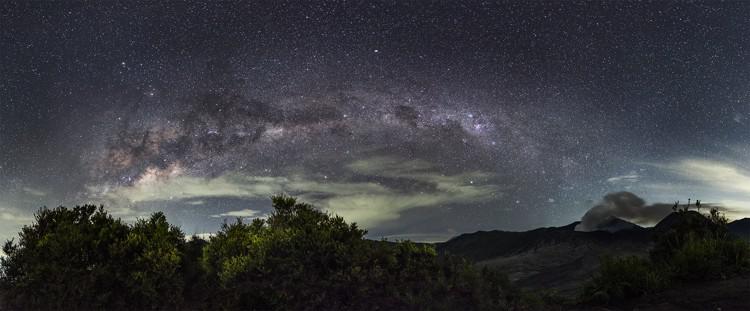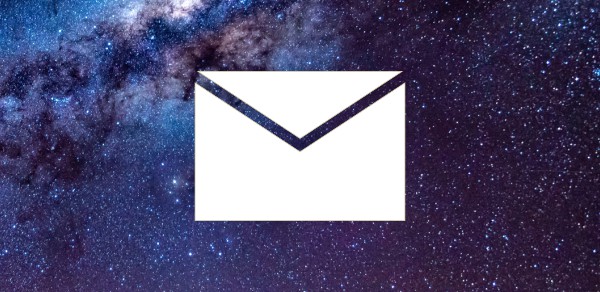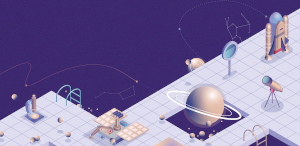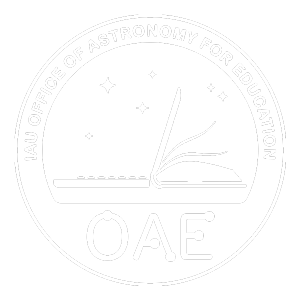This page describes an image Equatorial Milky Way
Image caption:
Honourable mention in the 2022 IAU OAE Astrophotography Contest, category Still images of celestial patterns: Equatorial Milky Way
Taken in Bromo-Tengger-Semeru National Park, Java Island, Indonesia, in March 2016, this image captures regions of the southern Milky Way and, at its left edge, the two planets Mars and Saturn. Mars appears orange and is similar in colour to the star Antares, whose Greek name — anti Ares — references this. Saturn is a little bit fainter than Mars, but clearly visible among the stars of Ophiuchus, above the Pipe Nebula and forming an isosceles triangle with Mars and Antares.
Mars is on the top and Saturn is vertically below. Visible to the naked eye, both planets have significance in many cultures around the world. In Roman mythology Mars is the god of war and fertility, and Saturn the god of sowing and agriculture. Its Greek equivalent, the god Kronos, is also considered the regent of completion. Indigenous Australians, including the Kamilaroi and Wailan people, associate Saturn with “wunygal”, a small bird. Mars is called Iherm-penh (something burnt in flames) by the Anmatyerre people of the Central Desert, while the Kokatha people of the Western Desert associate Mars and the star Anatres with the red-tailed black cockatoo (Kogolongo).
In the middle of this photograph, the most famous southern constellations are clearly recognisable: the Southern Cross (Crux), the pointer stars, Alpha and Beta Centauri, the dark Coalsack Nebula and the red Eta Carina Nebula, which is not visible to the unaided eye but is prominent in modern photographs. In the 19th century, the star eta Carinae had been the second-brightest star in the sky for some time, but since it varies irregularly, it has hardly been recognisable in recent decades, and its future visibility is unpredictable.
Triangulum Australe is visible between the pointer stars and the Scorpion, and in the constellation of Centaurus, the bright globular star cluster Omega Centauri is clearly displayed. It was considered a “nebulous star” since antiquity and, thus, was listed in star catalogues for at least 2000 years. Only within the last century did astronomers discover that globular star clusters are in the halo of our galaxy and that this one consists of roughly 10 million stars.
The dark regions in the Milky Way, which are cool, dense clouds of dust and gas, form the head and body of the Celestial Emu Tchingal. Together with the Southern Cross and the pointer stars, they appear in the Dreamtime stories of many Indigenous Australians. One story associated with the Djab Wurrung and the Jardwadjali people is part of a Dreamtime Story involving Tchingal, the Bram-bram-bult brothers (the pointer stars), their mother Druk (Delta Crux), and Bunya the hunter, who gets transformed into a possum (Gacrux, the red star at the top of the Southern Cross).
Scroll to captions in other languages
Image credit:
Giorgia Hofer/IAU OAE
DOI: 10.5281/zenodo.7425563
Related glossary terms:
Alpha Centauri
, Dust
, Dust Cloud
, Interstellar Extinction
, Mars
, Milky Way
, Saturn
, Scorpius
, Southern Cross
Categories:
Milky Way and Interstellar Medium
, Naked Eye Astronomy
Image license: Creative Commons Attribution 4.0 International (CC BY 4.0) Creative Commons Attribution 4.0 International (CC BY 4.0) icons
The media file captions presented on the OAE website were written, translated and reviewed by a collective effort from the OAE, the OAE Centers and Nodes, the OAE National Astronomy Education Coordinators (NAECs) and other volunteers. You can find a full list of credits for our translation project here. All media file captions are released under a Creative Commons CC BY-4.0 license and should be credited to "IAU OAE". The media files themselves may have different licenses (see above) and should be credited as listed above under "credit".
If you notice a factual error in this caption or an error in any of its translations then please get in touch.
Captions in Different Languages:
Image caption: Lobende Erwähnung im IAU OAE Astrofoto-Wettbewerb 2022, Kategorie Weitwinkelaufnahmen von Himmelsmustern.
Dieses Bild wurde im März 2016 im Bromo-Tengger-Semeru-Nationalpark auf der Insel Java in Indonesien aufgenommen und zeigt Regionen der südlichen Milchstraße und am linken Bildrand die beiden Planeten Mars und Saturn. Mars erscheint orange und ähnelt in seiner Farbe dem Stern Antares, dessen griechischer Name – Gegen-Mars – darauf verweist. Saturn ist etwas schwächer als Mars, aber deutlich sichtbar zwischen den Sternen des Schlangenträgers (lat. Ophiuchus) oberhalb des Pfeifennebels und bildet mit Mars und Antares ein gleichschenkliges Dreieck.
Mars ist der obere helle Punkt und Saturn befindet sich senkrecht darunter. Beide Planeten sind mit bloßem Auge sichtbar und haben in vielen Kulturen der Welt eine große Bedeutung. In der römischen Mythologie ist Mars der Gott des Krieges und der Fruchtbarkeit und Saturn der Gott der Aussaat und des Ackerbaus. Sein griechisches Pendant, der Gott Kronos, gilt zusätzlich als Herr der Vollendung. Die australischen Ureinwohner, darunter die Kamilaroi und die Wailan, assoziieren Saturn mit "wunygal", einem kleinen Vogel. Das Volk der Anmatyerre in der Zentralwüste nennt Mars Iherm-penh (etwas, das in Flammen aufgeht), während das Volk der Kokatha in der westlichen Wüste Mars und den Stern Antares mit dem schwarzen Rotschwanz-Rabenkakadu (Kogolongo) assoziiert.
In der Mitte des Bildes sind die bekanntesten Sternbilder des Südhimmels deutlich zu erkennen: das Kreuz des Südens (lat. Crux), die Zeigersterne alpha und beta Centauri, der dunkle Kohlensack und der rötliche Carinanebel, der mit bloßem Auge nicht sichtbar, aber auf modernen Himmelsaufnahmen deutlich zu sehen ist. Im 19. Jahrhundert war der Stern eta Carinae für einige Zeit der zweithellste Stern am Himmel, aber da seine Helligkeit unregelmäßig schwankt, war er in den letzten Jahrzehnten kaum noch zu erkennen, und seine künftige Sichtbarkeit ist unvorhersehbar.
Das südliche Dreieck (lat. Triangulum Australe) befindet sich zwischen den Zeigersternen und dem Skorpion, und im Sternbild Zentaur (lat. Centaurus) ist der helle Kugelsternhaufen omega Centauri deutlich zu erkennen. Er galt seit der Antike als "nebeliger Stern" und war daher mindestens 2000 Jahre lang in Sternkatalogen verzeichnet. Erst im letzten Jahrhundert entdeckten Astronom*innen, dass sich Kugelsternhaufen im Halo unserer Galaxie befinden und dass dieser aus etwa 10 Millionen Sternen besteht.
Die dunklen Regionen in der Milchstraße, bei denen es sich um kühle, dichte Wolken aus Staub und Gas handelt, bilden den Kopf und den Körper des Himmelsemu Tchingal. Zusammen mit dem Kreuz des Südens und den Zeigersternen tauchen sie in den Traumzeitgeschichten vieler australischer Ureinwohner auf. Eine Geschichte, die mit den Djab Wurrung und den Jardwadjali in Verbindung gebracht wird, ist Teil einer Traumzeitgeschichte, in der es um Tchingal, die Bram-Bram-Bult-Brüder (die Zeigersterne), ihre Mutter Druk (delta Crucis) und den Jäger Bunya geht, der in ein Opossum (Gacrux, der rote Stern an der Spitze des Kreuz des Südens) verwandelt wird.
Image credit: Giorgia Hofer/IAU OAE
Related glossary terms: Alpha Centauri , Dust Cloud , Interstellare Extinktion , Kreuz des Südens , Mars , Milchstraße , Saturn , Skorpion , Staub Caption translation status: Not yet approved by a reviewer
Caption translators: Carolin Liefke
Image caption: Menzione d'onore al concorso di astrofotografia IAU OAE 2022, categoria Immagini fisse di modelli celesti: Via Lattea equatoriale
Scattata a Bromo-Tengger-Semeru, sull'isola di Giava, in Indonesia, nel marzo 2016, questa immagine cattura regioni della Via Lattea meridionale e, al suo margine sinistro, i due pianeti Marte e Saturno. Marte appare di colore arancione ed è simile alla stella Antares, il cui nome greco - anti Ares - fa riferimento a questo. Saturno è un po' più debole di Marte, ma é ben visibile tra le stelle di Ofiuco, sopra la Nebulosa della Pipa e forma un triangolo isoscele con Marte e Antares.
Marte è in alto e Saturno è in basso in verticale. Visibili a occhio nudo, entrambi i pianeti hanno un significato in molte culture del mondo. Nella mitologia romana Marte è il dio della guerra e della fertilità, mentre Saturno è il dio della semina e dell'agricoltura. Anche il suo equivalente greco, il dio Crono, è considerato il reggente del completamento. Gli indigeni australiani, tra cui i Kamilaroi e i Wailan, associano Saturno al "wunygal", un piccolo uccello. Marte è chiamato Iherm-penh (qualcosa che brucia nelle fiamme) dagli Anmatyerre del deserto centrale, mentre i Kokatha del deserto occidentale associano Marte e la stella Anatres al cacatua nero dalla coda rossa (Kogolongo).
Al centro di questa fotografia sono chiaramente riconoscibili le costellazioni meridionali più famose: la Croce del Sud (Crux), le stelle puntatrici Alfa e Beta Centauri, la scura Nebulosa Sacco di Carbone e la Nebulosa rossa Eta Carinae, non visibile a occhio nudo, ma ben visibile nelle fotografie moderne. Nel XIX secolo, la stella Eta Carinae è stata per qualche tempo la seconda stella più luminosa del cielo, ma poiché varia in modo irregolare, negli ultimi decenni è stata difficilmente riconoscibile e la sua visibilità futura è imprevedibile.
Il Triangolo Australe è visibile tra le stelle puntatrici e lo Scorpione, mentre nella costellazione del Centauro è ben visibile il luminoso ammasso stellare globulare Omega Centauri. Era considerata una "stella nebulosa" fin dall'antichità e, pertanto, è stata inserita nei cataloghi stellari per almeno 2000 anni. Solo nell'ultimo secolo gli astronomi hanno scoperto che gli ammassi stellari globulari si trovano nell'alone della nostra galassia e che questo è composto da circa 10 milioni di stelle.
Le regioni scure della Via Lattea, che sono nubi fredde e dense di polvere e gas, formano la testa e il corpo dell'Emu Tchingal celeste. Insieme alla Croce del Sud e alle stelle puntatrici, compaiono nei racconti del Dreamtime di molti indigeni australiani. Una storia associata ai Djab Wurrung e al popolo Jardwadjali fa parte di un racconto della buona notte, che coinvolge Tchingal, i fratelli Bram-bram-bult (le stelle puntatrici), la loro madre Druk (Delta Crux) e Bunya il cacciatore, che si trasforma in un opossum (Gacrux, la stella rossa in cima alla Croce del Sud).
Image credit: Giorgia Hofer/IAU OAE
Related glossary terms: Alfa Centauri , Croce del Sud , Estinzione interstellare , Marte , Nube di polvere , Polvere , Saturno , Scorpione , Via Lattea Caption translation status: Approved by a reviewer
Caption translators: Giuliana Giobbi
Caption reviewers: Rodolfo Canestrari
Image caption: 2022 年国际天文学联合会 OAE 天体摄影比赛 "天体图案静态图像 "荣誉奖:赤道银河
这张照片于 2016 年 3 月拍摄于印度尼西亚爪哇岛的 Bromo-Tengger-Semeru 国家公园,捕捉到了银河南部的一些区域,以及银河左侧边缘的火星和土星。火星呈现橙色,与心宿二(Antares)的颜色相似,心宿二的希腊名称--反战神--就是指这一点。土星比火星稍暗一些,但在蛇夫座的恒星中清晰可见,位于管状星云上方,与火星和心宿二形成一个等腰三角形。
火星在上,土星在下。这两颗行星肉眼可见,在世界各地的许多文化中都具有重要意义。在罗马神话中,火星是战争和生育之神,土星是播种和农业之神。在希腊神话中,与火星相对应的克罗诺斯神也被认为是终结之主。澳大利亚原住民,包括卡米拉洛伊人(Kamilaroi)和怀兰人(Wailan),将土星与 "wunygal"(一种小鸟)联系在一起。中央沙漠的 安马特耶尔人(Anmatyerre) 称火星为 Iherm-penh(意为火焰中燃烧之物),而西部沙漠的 科卡塔人(Kokatha )则将火星与心宿二共同联想为红尾黑凤头鹦鹉(Kogolongo)。
在这张照片的中间,最著名的南方星座清晰可见:南十字座(十字星Crux)、指极星、半人马座α星和β星、暗色的煤袋星云(Coalsack Nebula)和红色的船底座η星云(Eta Carina Nebula,肉眼不可见但在现代摄影中十分著名)。在 19 世纪,海山二(船底座η)曾一度是天空中第二亮的恒星,但由于它的变化不规则,近几十年来难以观测,它未来的可见性也难以预测。
在指极星和天蝎座之间可以看到南三角座,而在半人马座,明亮的球状星团——半人马座ω(Omega Centauri)尤为醒目。自古以来,它就被认为是一颗 "云雾状恒星",因此被列入星表至少有 2000 年之久。直到上个世纪,天文学家才发现球状星团位于银河系的光环中,而这个球状星团由大约 1000 万颗恒星组成。
银河系中的暗区是低温、稠密的尘埃和气体云,它们构成了天体鸸鹋(Emu Tchingal)的头部和身体。它们与南十字星和指极星一起,出现在许多澳大利亚土著人的梦幻故事中。在有关贾布伍朗人(Djab Wurrung)和贾德瓦贾利人(Jardwadjali)的梦幻时代故事中,有一段与天灵鸸鹋(Tchingal)、Bram-bram-bult 兄弟(指极星)、他们的母亲 Druk(南十字座δ星)和猎人 Bunya的奇幻历险,而Bunya最终被变成了一只负鼠(对应南十字座γ星Gacrux的红色光芒)。
Image credit: Giorgia Hofer/IAU OAE
Related glossary terms: 半人马座 α , 南十字星 , 土星 , 天蝎座 , 尘埃云 , 星际消光 , 火星 , 灰尘 , 银河系 Caption translation status: Not yet approved by a reviewer
Caption translators: Hu Xueying
Image caption: 2022 年國際天文學聯合會 OAE 天體攝影比賽 "天體圖案靜態圖像 "榮譽獎:赤道銀河
這張照片於 2016 年 3 月拍攝於印度尼西亞爪哇島的 Bromo-Tengger-Semeru 國家公園,捕捉到了銀河南部的一些區域,以及銀河左側邊緣的火星和土星。火星呈現橙色,與心宿二(Antares)的顏色相似,心宿二的希臘名稱--反戰神--就是指這一點。土星比火星稍暗一些,但在蛇夫座的恆星中清晰可見,位於管狀星雲上方,與火星和心宿二形成一個等腰三角形。
火星在上,土星在下。這兩顆行星肉眼可見,在世界各地的許多文化中都具有重要意義。在羅馬神話中,火星是戰爭和生育之神,土星是播種和農業之神。在希臘神話中,與火星相對應的克羅諾斯神也被認為是終結之主。澳大利亞原住民,包括卡米拉洛伊人(Kamilaroi)和懷蘭人(Wailan),將土星與 "wunygal"(一種小鳥)聯繫在一起。中央沙漠的 安馬特耶爾人(Anmatyerre) 稱火星為 Iherm-penh(意為火焰中燃燒之物),而西部沙漠的 科卡塔人(Kokatha )則將火星與心宿二共同聯想為紅尾黑鳳頭鸚鵡(Kogolongo)。
在這張照片的中間,最著名的南方星座清晰可見:南十字座(十字星Crux)、指極星、半人馬座α星和β星、暗色的煤袋星雲(Coalsack Nebula)和紅色的船底座η星雲(Eta Carina Nebula,肉眼不可見但在現代攝影中十分著名)。在 19 世紀,海山二(船底座η)曾一度是天空中第二亮的恆星,但由於它的變化不規則,近幾十年來難以觀測,它未來的可見性也難以預測。
在指極星和天蠍座之間可以看到南三角座,而在半人馬座,明亮的球狀星團——半人馬座ω(Omega Centauri)尤為醒目。自古以來,它就被認為是一顆 "雲霧狀恆星",因此被列入星表至少有 2000 年之久。直到上個世紀,天文學家纔發現球狀星團位於銀河系的光環中,而這個球狀星團由大約 1000 萬顆恆星組成。
銀河系中的暗區是低溫、稠密的塵埃和氣體雲,它們構成了天體鸸鹋(Emu Tchingal)的頭部和身體。它們與南十字星和指極星一起,出現在許多澳大利亞土著人的咪幻故事中。在有關賈布伍朗人(Djab Wurrung)和賈德瓦賈利人(Jardwadjali)的咪幻時代故事中,有一段與天靈鸸鹋(Tchingal)、Bram-bram-bult 兄弟(指極星)、他們的母親 Druk(南十字座δ星)和獵人 Bunya的奇幻歷險,而Bunya最終被變成了一隻負鼠(對應南十字座γ星Gacrux的紅色光芒)。
Image credit: Giorgia Hofer/IAU OAE
Related glossary terms: 半人馬座 α , 南十字星 , 土星 , 塵埃雲 , 天蠍座 , 星際消光 , 火星 , 灰塵 , 銀河系 Caption translation status: Not yet approved by a reviewer
Caption translators: An automated transliteration from the simplified Chinese translation by - Hu Xueying









